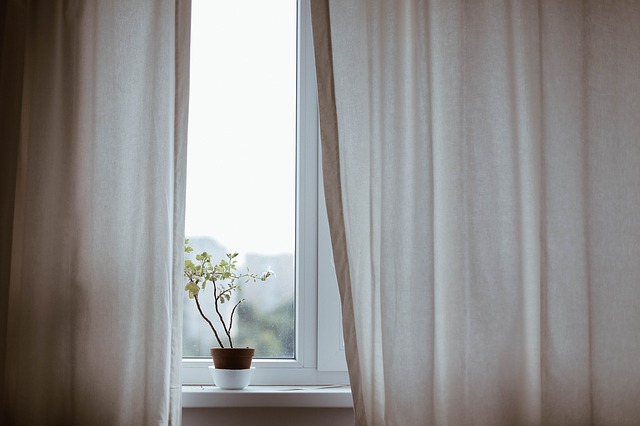
Image Credit: Pixabay
Humidity is the term used to describe the moisture content in the air you breathe. When the moisture in the air is in great concentrations, the humidity is said to be high. Low humidity is when less moisture is in the air.
In this article, we will describe why it is so important to control the humidity in your home, and how you can achieve optimum humidity levels.
The Benefits Of Proper Humidity
When the moisture content is too high or too low it can be harmful to both your health and the structure of your home. However, you have the ability to control humidity levels.
The safe zone for humidity is between 30 and 60-percent. This can be measured with a hygrometer. When the humidity is properly controlled, there are several benefits to you and your home. They include the following:
1. Mildew And Mold Prevention
Mold and mildew require warm, moist air and a food source to develop. By controlling humidity, these fungi are unable to form, grow or spread. Mold and mildew can cause a variety of illnesses and allergic reactions and can cause damage to walls, floors and anywhere else mold can grow.
2. Indoor Air Quality Improvements
Allergens are contained in the air we breathe. As mentioned above, with high humidity levels, mold and mildew contribute to those allergens. However, when humidity is low, the dry conditions can be inviting for dust mites and various other microscopic airborne particles that can irritate our respiratory system. (See also: 7 Steps to Take When Asthma Knocks on the Door)
3. Add To Your Personal Comfort
With a home that has controlled humidity, you will find the surroundings comfortable to spend time in. When the air is too damp or too dry, it affects our skin, hair, and breathing. Plus, wood reacts to moisture or dryness as well. A home with wood furnishings can sustain damage.
The Ways To Reduce And Control Humidity
Relying on your home air conditioning unit is not the best method when dealing with humidity issues. However, you can use an appliance that is specifically designed to regulate moisture content in the air you breathe inside your home. If you have high humidity, a dehumidifier will help to rectify the situation. In climates where the air is dry with low humidity, a humidifier will help.
Other ways to control the humidity in your home include:
1. Opening Windows
When you open windows in your home you create cross ventilation or a draft or breeze that moves the moist air out. When moist internal air is removed it is replaced by fresh air with lower humidity.
2. Venting To The Outside
Kitchens, bathrooms and laundry rooms are notorious for raising humidity levels in portions of your home. The best way to prevent moisture build-up is to have vents outside from these rooms.
You can also install an automatic humidity control system that starts extractor fans only when the humidity levels go above a preset level. Because they sense the surrounding environment and automatically start and stop when required, they are a great solution for moisture hot-spots.
How To Prevent High Humidity
There are several ways in which you can control the humidity levels in your home. When you do this it is not only a benefit to your health but you can also prevent damage to your home.
Here are a few suggestions to inspire you to keep your living space safe:
1. Start At The Bottom
If your home has a crawl space with a dirt floor, you can reduce the risk of mold or mildew development and growth by adding a vapor barrier to the floor. You can also use a dehumidifier. There are models designed just for this purpose with drain hoses or water collection buckets.
2. Move A Little Higher
In addition to installing and using extractor fans in rooms where moisture collects, you can also reduce the risk of increased humidity by sealing air and ducts leaks in your home.
You can also fight humidity and beautify your interior at the same time. There are houseplants that are very effective in drawing moisture from the air. Boston ferns are one popular choice to consider.
3. Step Outside As Well
There are many things you can do outside your home to reduce excess moisture levels. For instance, air conditioning drain hoses should be operating properly and directing water away from the house, preferably into a drain. Repair if necessary.
Also, ensure that gutters and downspouts are not clogged. Keep moisture from collecting near your home with landscaping that slopes away from your house and uses plants that are also located away from walls and large windows. Do not overwater your lawn or garden either.
In Conclusion
As harmful as the wrong humidity levels can be to both your health and home, it can be a problem with a relatively easy fix. You can control the humidity with appliances and reduce the risk of moisture collection by employing some simple remedies in and around your home. You will notice a difference in how you feel almost immediately. Stay safe and healthy in your home with the correct humidity levels.
About The Author:
David is the owner of DehumidifierReviewsInfo.com, a website that provides reviews and valuable information about the best dehumidifiers to remove moisture, clean and purify the air in your home.




![[Orthodontic Treatments] How They Improve Your Oral Health? Orthodontic Treatments](https://www.safeandhealthylife.com/wp-content/uploads/2021/10/Orthodontic-Treatments-150x150.jpg)